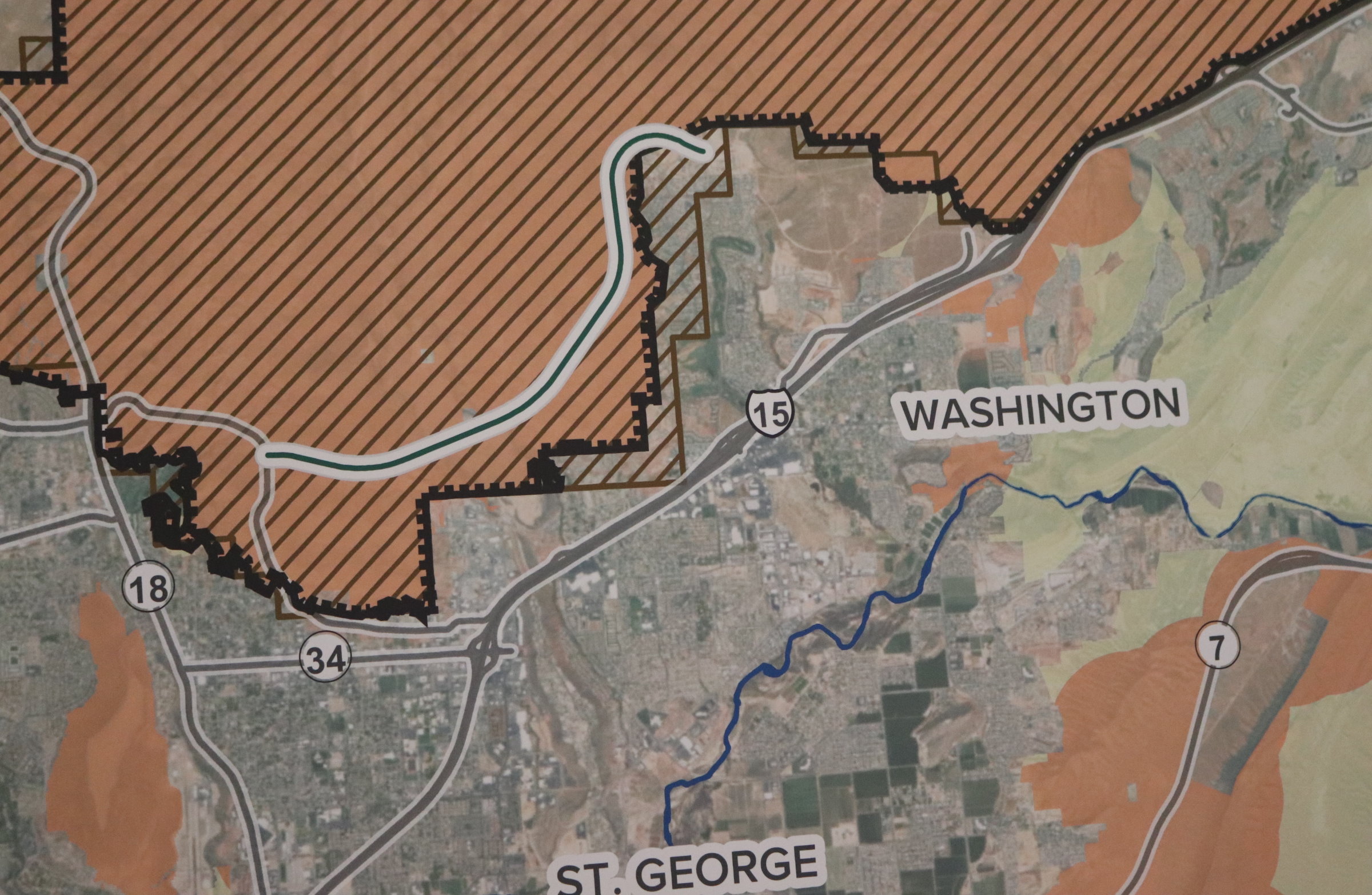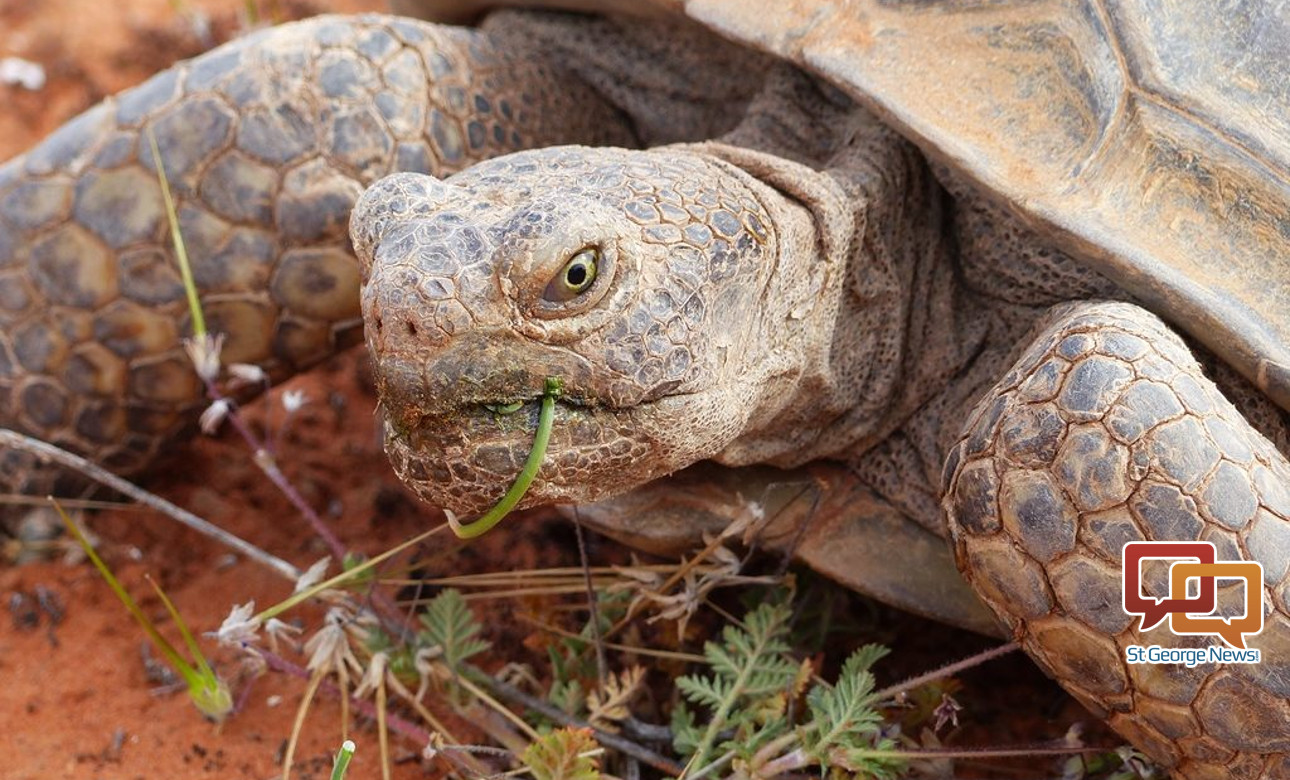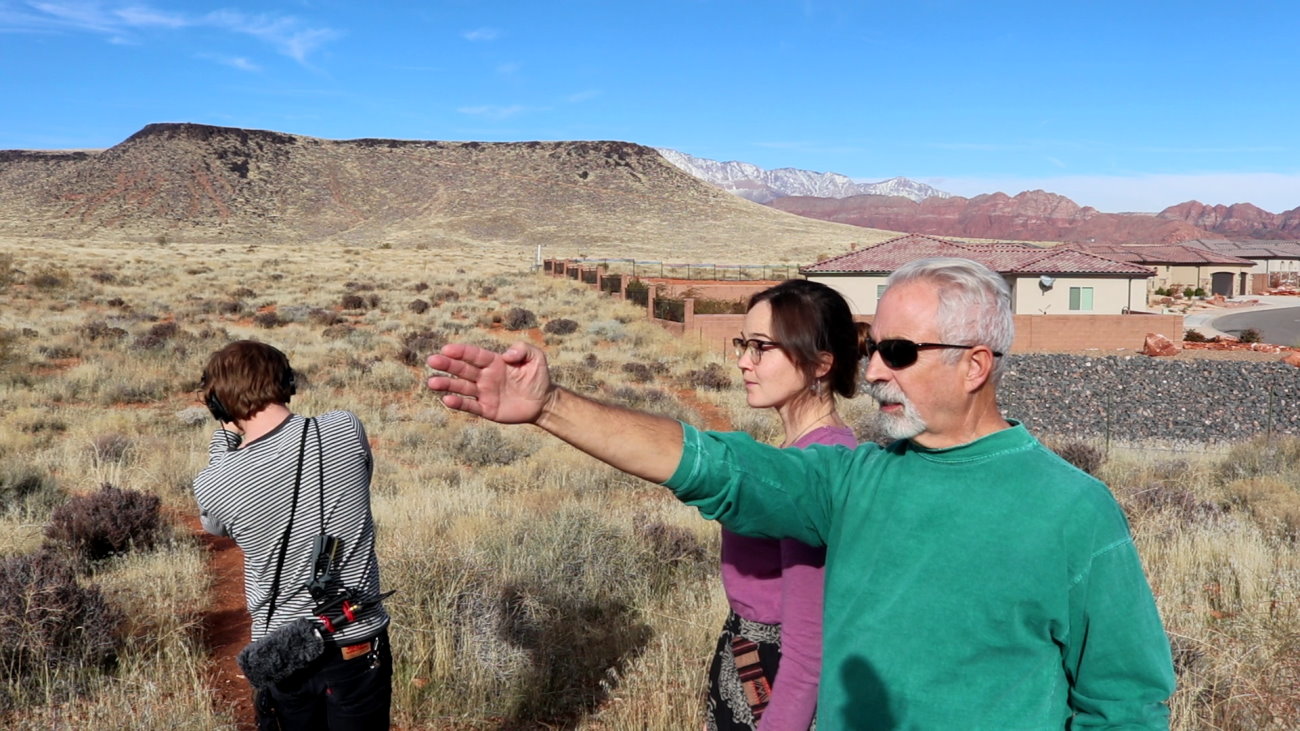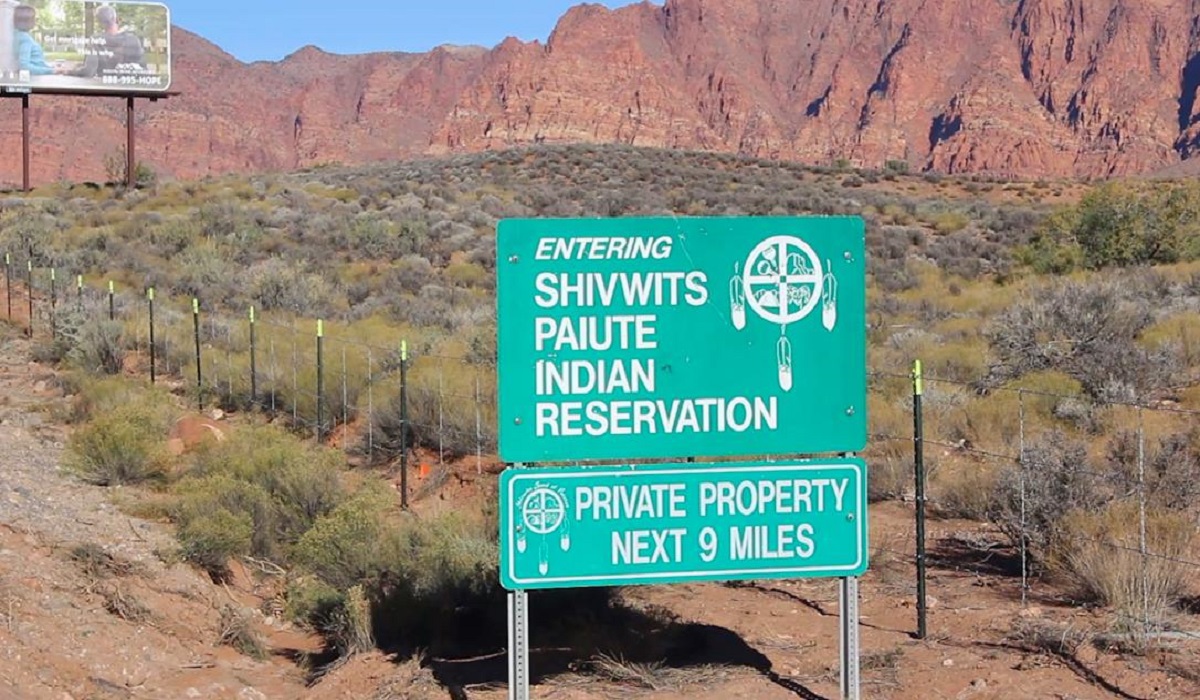ST. GEORGE — Congressman Chris Stewart has re-introduced legislation that would expand the Red Cliff Desert Reserve while also authorizing a right of way for the Northern Corridor through protected tortoise habitat.

Listed as HR 7815, Stewart, a Republican representing Utah’s 2nd Congressional District, announced the new bill July 30. It mirrors legislation that he originally sponsored in 2018 that was was heard before a House committee, yet was ultimately shelved.
“Sometimes it takes more than one Congress to get legislation accomplished,” Stewart told St. George News Friday. “We’ll try again and keep pushing it.”
Stewart’s new bill rolled out during the public comment period for the draft environmental impact statement, or DEIS, for the proposed Northern Corridor and HCP renewal and expansion.
The DEIS is a part of the overall National Environmental Policy Act (NEPA) process that evaluates the potential need of proposed projects and their possible impacts on the environment and other factors. The DEIS for the Northern Corridor project has labeled a right-of-way route proposed by the Utah Department of Transportation as its preferred alternative.

The proposed highway, which would stretch four miles from a connection to Washington Parkway on its east end and connect to Red Hills Parkway on the western end under the UDOT alignment, is seen as a crucial piece of transportation infrastructure by state and local officials. They have stated for years that the preexisting traffic system will “fail” if the Northern Corridor is not constructed in order to help relieve increased traffic that will come with a projected county population of nearly 500,000 by 2060.
This preferred alternative also includes setting aside nearly 7,000 acres west of Bloomington in the Bear Claw Poppy Trail area for the creation of “Zone 6.” This area would be added to an amended Habitat Conservation Plan as a protected Mohave desert tortoise habitat in order to offset the impacts of the Northern Corridor.
The adoption of the amended HCP will renew the plan for another 25 years. While the current plan expired in 2016, the U.S. Fish and Wildlife Service has allowed it to continue as it and other parties involved, such as Washington County and other federal and state agencies, addressed various issues attached to the renewal process.

As public comment on the DEIS continues through Sept. 10, detractors of Stewart’s reintroduction of a Northern Corridor bill claim he’s attempting to skirt the NEPA process.
In a recent letter to St. George News, Richard Spotts, who has long-opposed the Northern Corridor project, wrote:
“Stewart recently introduced H.R. 7815. With one exception, this legislation is virtually identical to his terrible anti-NEPA bill two years ago. Like before, it would circumvent and supersede the current NEPA process, DEIS alternatives analysis and public commenting opportunity. It would give UDOT and county officials everything they want, and remove agency discretion to consider other laws, science, and public concerns.”
Stewart said he wasn’t surprised by the accusation.
“Of course they’re claiming that,” he said. “Its nonsense and it’s just not true. There’s a NEPA process that’s moving forward and we support it. We’re optimistic it’s going to be helpful in this.”
The proposed legislation and the NEPA process for the Northern Corridor and HCP are not mutually exclusive, Stewart added, saying there wasn’t a need to wait on the results of the NEPA process before introducing the bill. Those results can just as easily be added to an amended version of the bill in the future, as it will likely be a legislative issue that will still need addressing, Stewart said.

The bill may also act as a possible back up to getting the Northern Corridor if the final EIS doesn’t look favorably on the corridor project for whatever reason, the congressman said.
“At that point, you adapt,” Steward said. “At the end of the day, you’d have to address those concerns.”
An aspect of the new bill that wasn’t a part of the original bill two years ago is the inclusion of clarifying the sovereign and independent status of the Shivwits Band of Paiutes.
“We started working with them because we wanted to expand the habitat for the tortoise and this area we call Zone 6,” Stewart said. “They made us aware of frustrations with some government ties they have. It’s not our intention or desire to delve into tribal government affairs, but we recognize their sovereignty and their ability to govern themselves.”
As the congressman and his people were already working with the Shivwits Band on tortoise habitat, the measure to recognize tribal sovereignty was added to the overall bill. It was also considered easier to tie the measure to an existing bill rather than create a separate one.

According to a press release from Stewart’s Office, the Shivwits Band is supportive of HR 7815:
“The Shivwits Band of Paiutes (Tribe) supports this bill because it preserves a lot of conservation habitat and provides the tribe a meaningful voice in protecting desert tortoises and their habitat. We like this bill because it clarifies Congress’ 1980 Act to restore the tribe in a way that allows our tribe to interact effectively with stakeholders. We appreciate our good relationship with state and local authorities and are glad to support this Bill by Representative Stewart.”
Last year, the Washington County Commission also recognized the Shivwits Band’s tribal sovereignty through a unanimously approved resolution.
In summary, Stewart’s legislation “authorizes administrative changes that are necessary for Washington County,” according to Stewart’s Office, which are listed below:
- Renews the Desert Tortoise Habitat Conservation Plan incidental take permit in Washington County, Utah ,for 25 years.
- Expands the Red Cliffs Desert Reserve by nearly 7,000 acres, referred to as Zone 6, to improve tortoise management and provide a land bank for mitigation to impacts to the Red Cliffs Desert Reserve.
- Clarifies that the Shivwits Bands of Paiute Indians is sovereign and independent.
- Preserves the existing utility corridors and utility development protocols that were written to protect tortoises when utilities are being constructed.
- Preserves existing grazing rights within Red Cliffs National Conservation Area or Beaver Dam Wash National Conservation Area.
- Clarifies that water rights are not to be held by the federal government in either the Red Cliffs National Conservation Area or Beaver Dam Wash National Conservation Area.
- Authorizes a Northern Corridor to be built through the Red Cliffs Desert Reserve to move traffic east and west.
Copyright St. George News, SaintGeorgeUtah.com LLC, 2020, all rights reserved.